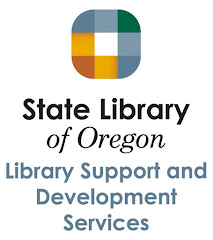Scheeren, William O. Technology Handbook for School Librarians. Santa Barbara, CA: Libraries Unlimited, 2015.
ISBN: 978-1-4408-3396-0
ISBN: 978-1-4408-3396-0
Publisher's Description
Stay current, meet educational standards, and keep your students coming back again and again by incorporating the latest technologies into your school library.
Both theoretical and practical, this book will provide you with a strong introduction to a variety of technologies that will serve you—and your patrons—well. Each chapter addresses a different aspect or kind of technology. You'll learn essential skills, planning and funding techniques, and what hardware and software you'll need. You'll find plenty of information on creating or maintaining your library's web presence through websites, blogs, and social networking, as well as on various tools that you can use and apply to your curriculum.
Many state standards include technology components, and this guide shows you how to meet them and stay up to date. You'll also learn what you should watch for in the future so you remain essential to your school.
Features
- Includes a web companion that posts updates and keeps readers abreast of new products and changes in the field
- Offers a series of case studies to test and challenge students
- Addresses technology in the curriculum, including STEM and Common Core standards
Chapter 1: School Libraries: How It Was
Chapter 2: How It Is
Chapter 3: Technology Skills for School Librarians
Chapter 4: Networks, Hardware, and Software for School Libraries
Chapter 5: Computing in the Cloud
Chapter 6: Planning for and Funding Technology in the School Library
Chapter 7: Copyright, Censorship, Filtering, and Security Systems
Chapter 8: Library Information Systems
Chapter 9: School Library Web Sites
Chapter 10: Digital Libraries and Digital Collections
Chapter 11: Online Materials for the School Library
Chapter 12: Electronic Books (eBooks)
Chapter 13: Integrating Technology into the Curriculum
Chapter 14: Web 2.0 and Related Technology
Chapter 15: Common Core Standards and STEM
Chapter 16: Educating Digital Natives and Countering Cyberbullying
Chapter 17: Where Are We Going: The School Librarian, Technology, and the Future









